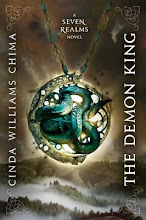Her U.S. publisher, Bloomsbury, ended up changing the cover, delaying the release of the book.
How important are book covers to the success of a book?
I would say, very important, for teen books especially. When I speak at schools and libraries, I talk about the process of cover selection and design and show various versions of my book covers. When I ask teens, “Do you judge a book by the cover?” the answer is um, yes.
Watch a teen browsing in a bookstore some time. The book cover is what persuades—or dissuades—a teen to pick it up. Then they’ll look at the flap copy, maybe read the first page, and flip through to see how dense it is.
Because covers are very important at the point of sale, this has sometimes lead to misleading covers. For example, you don’t want a cover that says “pompous, boring and wordy” or “totally incoherent” even if the book inside matches that description.
Have you ever felt betrayed by a book that doesn’t keep the promise that the cover made? Here’s a possible example. BTW, this book was not written by Dan Brown.

John Green makes a strong argument that misleading covers are a bad long-term sales strategy. The idea is not just to sell to the largest audience, but to sell to the right audience that will like the book and sell it through word of mouth.
The Demon King is out in the Netherlands. The Dutch cover is very cool—but it doesn’t really match the book.

The book contains no dragons, no sailing ships, no cool wizard staff like this. The cover does promise fantasy. Oh, yeah—the title is different, too. The Dutch title means, “Black Magic.” I’ve been getting fan mail from the Netherlands, and nobody’s complained about it, though somebody did write and ask why the title is “Black Magic” in the Netherlands, and “The Demon King” in the U.S. Answer: I don’t know.
Next post: more on covers















